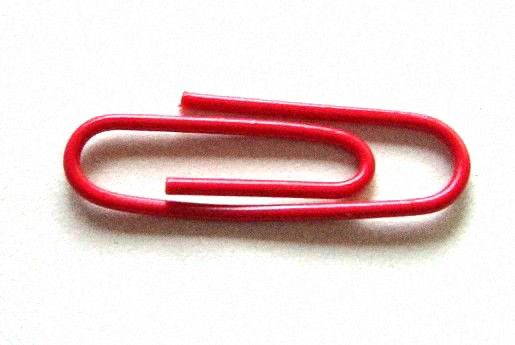What a red paperclip can teach you about being a Scrum Master
Scrum Masters should focus on the adjacent possible to be successful

Do you believe it is possible to trade a paperclip for a house?
Of course not! Nobody in their right mind would believe this to be possible unless somebody rigged the transaction from the start.
However, you would be wrong. A Canadian named Kyle MacDonald traded the red paper clip you just saw for this house:
How did Kyle achieve this? He traded his red paperclip for a fish-shaped pen. The fish-shaped pen became a hand-sculpted doorknob. He continued trading, and each time he received something new and better.
These are all subsequent trades he made in chronological order:
Coleman camp stove (with fuel)
Honda generator
An instant party consisting of: an empty keg, an IOU for filling the keg with the beer of the bearer’s choice, and a neon Budweiser sign.
Ski-Doo snowmobile
Two-person trip to Yahk in British Columbia
Box-truck
Recording contract
Year of rent in Phoenix, Arizona
One afternoon with Alice Cooper
KISS motorized snow globe
Role in the movie Donna on Demand
Two-story farmhouse in Kipling, Saskatchewan
There were many steps in between, but it all started with a paperclip and ended with a two-story house.
The important lesson of this story is that it is impossible to trade a paperclip straight away for a two-story farmhouse. That’s not how it works; you would be laughed away. A paperclip is in a completely different league than a house. However, trading a paperclip for a fish-shaped pen? Definitely possible!
The fish-shaped pen is part of the adjacent possible, a step within reach from the red paperclip’s current vantage point. Each step you make results in new options that suddenly enter the realm of the adjacent possible. This is what ultimately makes it possible to trade a paperclip, through many different transactions, for a house.
So how does the story of the red paperclip relate to the Scrum Master role?
Scrum Masters must meet their team where they are, not where they want them to be
Our main job as a Scrum Master is to meet the team where they are, not where we want them to be. It is our job to slowly guide them to the next nearby destination until they end up where we want them to be.

Where we want a team to be, rarely lies within the adjacent possible. We always fantasize about the dream state of our team. The dream state is always out of reach from the current state. You need to start with where the team is and identify the best next step in the adjacent possible.
As a Scrum Master, it is easy to list all things a team can do better. However, those improvements lie outside the adjacent possible. It’s not particularly helpful to tell a team everything they can do better. You will just be frustrating your team by dangling improvement points that are out of reach.
Try to understand the next best next step you can help your Scrum Team to take. Every action taken reveals new options. These new options may have previously been too aggressive for the team to consider. They were not part of the adjacent possible before taking the step that revealed them. Doing this requires patience and gentle persistence, but it’s the only way to help your Scrum Team reach their destination.
To provide a concrete example: we all want to have a high-performing team where every team member is accountable for the result. However, if there is no psychological safety, it makes no sense to focus on making the team accountable for results. If there is no psychological safety to begin with, becoming accountable for results does not lie within the adjacent possible.
Few people are cut out for this line of work. Scrum Masters need to be able to think ten steps ahead, but can only act one small step at at a time. Scrum Masters must restrain themselves from trying to take shortcuts to the desired end state that are impossible. There are no shortcuts, you can only gently nudge a Scrum Team to slowly move through the adjacent possible.
A great Scrum Master focuses all their effort on making the best next step that will ultimately make the subsequent nine steps possible. Big changes, especially if they need to last, never happen overnight. You don’t exchange a red paperclip for a house, you need to start with a fish-shaped pen first.
The way of the Scrum Master demands patience, because slow is the only approach: many tiny changes that together add up to a big and lasting transformation.




